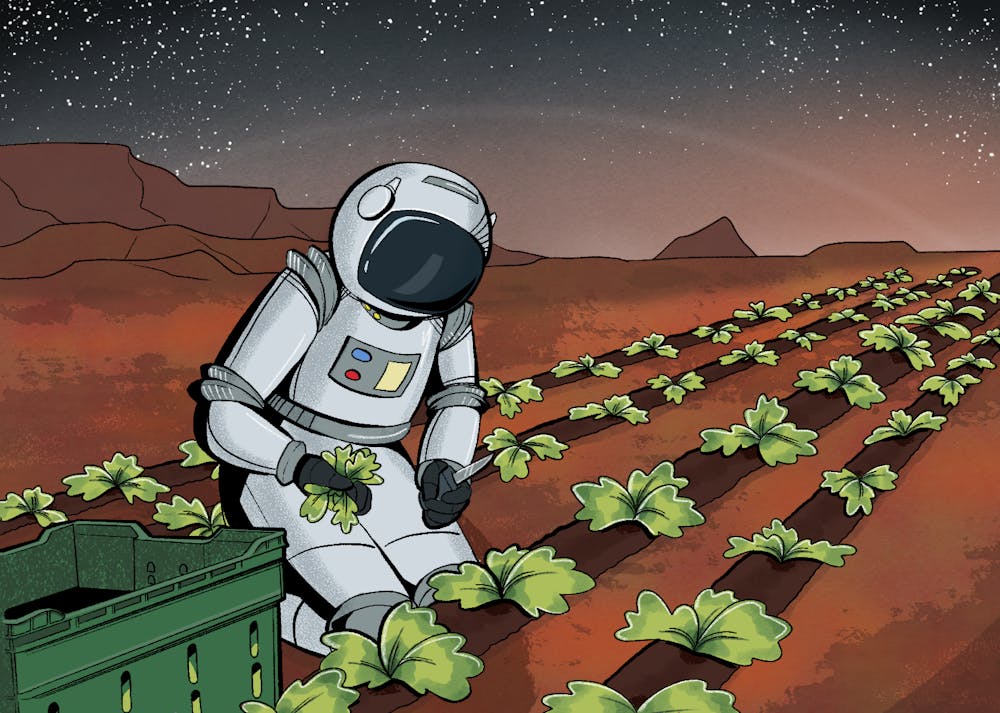Preparations for human life on Mars are underway. With private companies like Relativity Space declaring a long-term goal of Mars habitation, and NASA seeking volunteers for a Mars life simulation, the question of how humans might sustain themselves on another planet is no longer hypothetical.
A study from researchers at ASU, with funding from both NASA and the National Science Foundation, is helping to potentially answer this question.
One of the researchers on the project is Andrew Palmer, an associate professor in ocean engineering and marine science at the Florida Institute of Technology.
Palmer's lab is split up into different areas of study: spaceflight operations, plant growth-promoting bacteria, and simulated extraterrestrial soil.
"We then have another project, which was focused around the capacity to convert Martian and lunar regolith simulants into basically soil," Palmer said. "Then squarely in the middle of those two projects is an attempt to see how we can incorporate the plant microbial interactions."
Regolith is described as the loose material like dust and rocks covering a planet's bedrock. On Earth, this includes soil, but according to Palmer, the equivalent on Mars presents unique challenges to agriculture.
"One of the big challenges that you face with the regolith is when you water it," Palmer said. "A lot of simulants are very fine particles. And when you water them, they have a tendency to, for lack of a better word, turn into concrete. They really firm up, and when they do that, it compacts the roots. Roots can either not penetrate or can be suffocated."
Despite this, the solution that Palmer's lab found was relatively simple.
"One of the first fixes we found for that was actually just massaging the pots. So we grow our plants in little pots, and literally some student had the job of massaging the pot a little bit on a regular basis to loosen the material up." Palmer said.
Now, the lab utilizes spacers and mixed-in minerals to provide aeration to the regolith, a more long-term solution.
Rafael Loureiro, an assistant professor of botany and plant physiology at Winston-Salem State University, studies plant physiology applied to space biology. His work involves environments beyond Earth, including both Mars and the moon.
"Currently, the focus of most of the research that happens in the lab is regular space agriculture," Loureiro said. "We're trying to find ways to make plants more comfortable in lunar regolith, and identify the specific stressors and biochemical pathways for us to try to make them more open for the scientific community."
Loureiro's studies have been testing the growth of different vegetables, where they have observed some grow better than others.
"We have tested two pick-and-eat crops. There are tomatoes and peppers they have tried," Loureiro said. "So far, in the lunar regolith and also Martian regolith, they have done very well. The plant grows well and the seeds that are generated by the plant grow well."
Due to the encouraging results of their studies, Loureiro is confident that someday humans will use these methods while living off-world.
"I think that in maybe 10 to 15 years, we're going to have a fully sustainable system for us to utilize all the resources that we have on the moon, and potentially Mars, to grow crops completely independent from Earth," Loureiro said.
Edited by River Graziano, Alysa Horton and Caera Learmonth.
Reach the reporter at hrhea@asu.edu.
Like The State Press on Facebook and follow @statepress on X.

Hunter is a senior studying technological leadership. This is his fourth semester with The State Press. He has also worked as a legislative intern.




